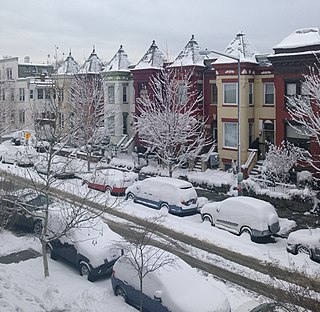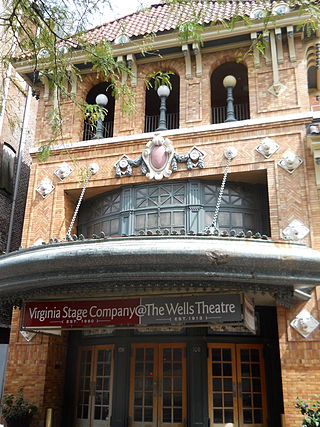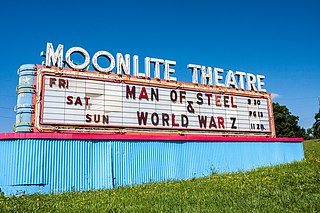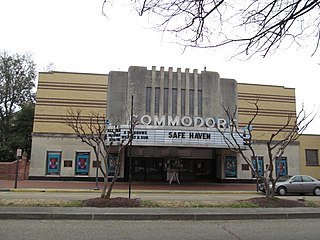
Crispus Attucks was an American whaler, sailor, and stevedore of African and Native American descent, who is traditionally regarded as the first person killed in the Boston Massacre, and as a result the first American killed in the American Revolution.

Bloomingdale is a neighborhood in the Northwest quadrant of Washington, D.C., less than two miles (3 km) north of the United States Capitol building. It is a primarily residential neighborhood, with a small commercial center near the intersection of Rhode Island Avenue and First Street NW featuring bars, restaurants, and food markets.

Crispus Attucks High School is a public high school of Indianapolis Public Schools in Indianapolis, Indiana, U.S. Its namesake, Crispus Attucks, was an African American patriot killed during the Boston Massacre. The school was built northwest of downtown Indianapolis near Indiana Avenue and opened on September 12, 1927, when it was the only public high school in the city designated specifically for African Americans.

The Madam C. J. Walker Building, which houses the Madam Walker Legacy Center, was built in 1927 in the city of Indianapolis, in the U.S. state of Indiana, and as Madam C. J. Walker Manufacturing Company, it was designated a National Historic Landmark in 1991. The four-story, multi-purpose Walker Building was named in honor of Madam C. J. Walker, the African American hair care and beauty products entrepreneur who founded the Madam C. J. Walker Manufacturing Company, and designed by the Indianapolis architectural firm of Rubush & Hunter. The building served as the world headquarters for Walker's company, as well as entertainment, business, and commercial hub along Indiana Avenue for the city's African American community from the 1920s to the 1950s. The historic gathering place and venue for community events and arts and cultural programs were saved from demolition in the 1970s. The restored building, which includes African, Egyptian, and Moorish designs, is one of the few remaining African-Art Deco buildings in the United States. The Walker Building was added to the National Register of Historic Places in 1980.

The Howard Theatre is a historic theater, located at 620 T Street, Northwest, Washington, D.C. Opened in 1910, it was added to the National Register of Historic Places in 1974.

The Hanover Tavern is a community center, theatre, and recreational tavern located in Hanover, Virginia. Originally built in 1733, it is one of the oldest taverns in the United States.

The Mishler Theatre is a Beaux-Arts stage and movie theater located at 1208 Twelfth Avenue in Altoona, Pennsylvania.

The Wells Theatre is a performing arts venue located in downtown Norfolk, Virginia. It has housed the Virginia Stage Company since 1979. The Wells Theatre is owned and operated by the City of Norfolk and is part of The Seven Venues.

The Lincoln Theatre is a 582-seat performing arts venue located at 769 E. Long Street in the King-Lincoln Bronzeville neighborhood of Columbus, Ohio. The theater is owned by the City of Columbus under the auspices of the Lincoln Theatre Association. Operation of the facility is managed by CAPA. It was listed on the National Register of Historic Places in 1992.

The Henrico Theatre is an historic theater building located in Henrico County, Virginia. The theater was built in 1938, and was constructed in the Art Deco style using poured concrete and brick. The building has three bays, of which the centermost is recessed. That central bay features the theater's name in large stylized letters, the building's original marquee, and a clock designed to echo the shape of the building and created by the International Business Machine Corporation. The auditorium initially sat 782; its capacity was reduced to 400 after a renovation.

The National Theater is a historic theater in Richmond, Virginia. Part of a section of Broad Street once known as Theatre Row, the National is the only one of the three original auditoriums still standing. Built in 1923, the theater was constructed with an adaptable stage that allowed it to show early motion pictures as well as live performances. It experienced a 1968 conversion to a dedicated cinema house and was renamed the TowneTheater, in which capacity it operated until closing in 1983. After an extensive renovation, the theater reopened in 2008 as The National, serving as a live music and performing arts venue.

The F. M. Kirby Center is a historic Art Deco-Moderne style movie theater located at Wilkes-Barre, Pennsylvania. It was added to the National Register of Historic Places in 1980.

Pitts Theatre, also known as the State Theatre after 1970, is a historic movie theater located at Culpeper, Culpeper County, Virginia. It was built in 1937–1938, and is a concrete block structure faced in brick in the Art Deco style. The building consists of a symmetrical three-bay façade, with a central theater entrance flanked by storefront retail spaces. The façade features a stepped massing that recedes from the entrance and storefronts. The interior has a sophisticated circulation system, which enabled balcony patrons, which were initially African-American, and white patrons to enter the theater separately to separate spaces; the main balcony and auditorium, respectively. The theater closed in 1992.

Donk's Theatre was a historic movie theater located at Hudgins, Mathews County, Virginia.

Colonial Theatre, also known as The Colonial Center for the Performing Arts, is a historic movie theater located at South Hill, Mecklenburg County, Virginia. It was built in 1925, and housed in a three-story brick building done in the Commercial Style. It was listed on the National Register of Historic Places in 2003, and as of 2023 is used primarily for community theater productions, musical performances, and local events.

Lincoln Theatre is a historic theatre building located at Marion, Smyth County, Virginia. It was opened in 1929, and is a three-story theater located behind the Royal Oak Apartment House. Access to the theatre is through a broad arcade on the ground floor of the apartment house. The interior of the theatre is designed to suggest an ancient Mayan temple. It also features six large paintings, depicting scenes from American and local history. The theatre closed in 1977. It later reopened in 2004 as a community performing arts center.

The Moonlite Theatre, also known as the Moonlite Drive-In, is a historic drive-in theater located near Abingdon, Washington County, Virginia. It was built and opened in 1949, and remained one of the few drive-ins still open in Virginia until finally closing in 2013. The theater reopened briefly in 2016 but closed shortly after due to a pending lawsuit. Remaining original buildings and structures include the 65-foot-tall screen tower and office wing, the ticket booth, the concession stand/projector booth building, and the neon-illuminated attraction board at the edge of the highway. The theatre includes 454 parking/viewing spaces designed as reverse-incline ramps.

Commodore Theatre is an historic movie theater located at Portsmouth, Virginia. It was built in 1945 in the Streamline Art Deco style, and originally sat 1,000 people. The theater closed in 1975 and sat empty until a change in ownership and extensive renovation beginning in 1987. It reopened two years later, and as of 2023 was in operation displaying first-run films accompanied by a full kitchen.

Washington Street–Monument Circle Historic District is a national historic district located at Indianapolis, Indiana, United States, covering the first two blocks of East and West Washington and Market streets, the south side of the 100 block of East Ohio Street, Monument Circle, the first block of North and South Meridian Street, the first two blocks of North Pennsylvania Street, the west side of the first two blocks of North Delaware Street, the east side of the first block of North Capitol Avenue, and the first block of North Illinois Street. In total, the district encompasses 40 contributing buildings and 2 contributing structures in the central business district of Indianapolis centered on Monument Circle. It developed between about 1852 and 1946, and includes representative examples of Italianate, Greek Revival, and Art Deco style architecture.
























